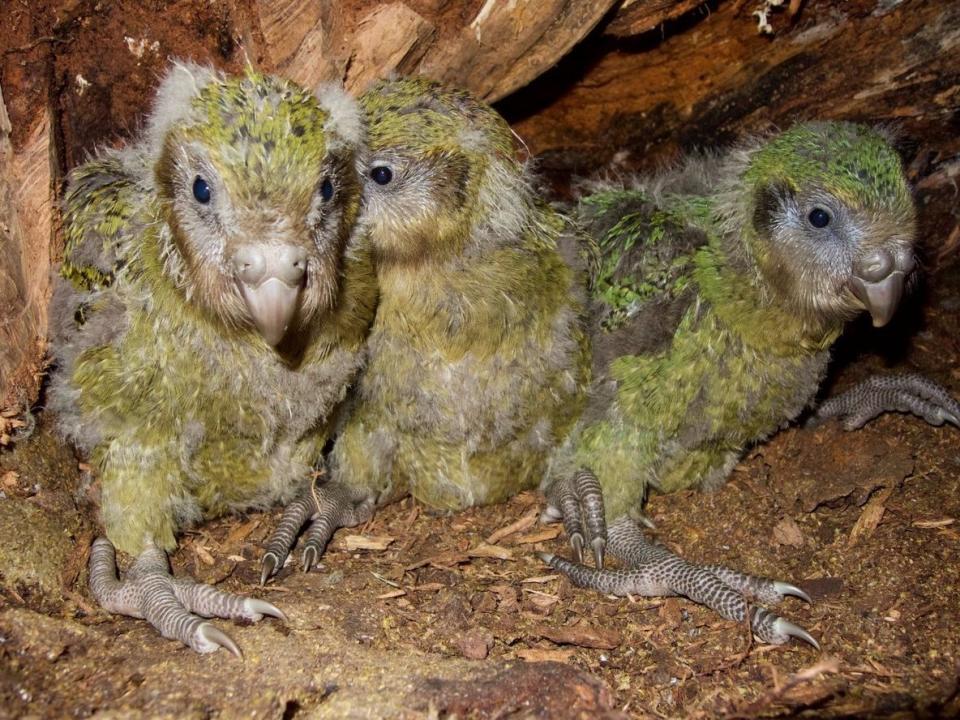Critically endangered New Zealand kakapo population boosted by record number of chicks
New Zealand’s critically endangered ground-dwelling parrot the kakapo, has hatched in record numbers during an unusually long breeding season, bringing hope the species, which was almost wiped out, can make a long-term recovery.
Over 70 chicks have been born – dramatically increasing the current adult population of the birds which was known to stand at 147.
While not all the chicks are expected to make it to adulthood, the figures are encouraging, according to New Zealand’s Department of Conservation (DoC).
“It’s been going on for a long time...we had our first mating before Christmas, the first chick hatched on the 30 January, the earliest a chick had ever hatched,” Andrew Digby, a science advisor on the DoC’s Kakapo Recovery Programme, told Radio New Zealand
Kakapo are the world’s heaviest species of parrot, with females weighing around 1.4 kgs (3.1 pounds) and males 2.2 kgs (4.8 pounds).
Before human settlement the bird was the third most common bird on New Zealand. But when the Maori people landed about 700 years ago, the clearing of vegetation and the introduction of rats significantly reduced the population of the birds.
The situation was dramatically worsened by the arrival of Europeans who in the early 19th Century brought more predators including domestic cats, black rats and stoats.
By the end of the century, recognising the kakapo population was severely threatened, efforts were made to protect the species, including the founding of an island nature reserve. The move had limited success, and the species was decimated across New Zealand. By the 1970s naturalists were uncertain whether the species had become extinct or not.
After finding a number of the birds on small islands in the 1980s, in 1995, the Kakapo Recovery Programme was established, and used four small predator-free islands to help the species recover.
Digby told Radio New Zealand that the young chicks were still quite uncoordinated and conservation staff were training them to get used to exploring so they can eventually climb 30 metres (90 feet) trees on dedicated island sanctuaries.
“Those sort of skills and the balance and learning how to cope with the New Zealand bush is quite a big skill,” he said, adding even the chicks that were now two months old were uncoordinated.
“When they’re at this stage...they look pretty cute, they’re like bumbling puppies at the moment.”

 Yahoo News
Yahoo News 

